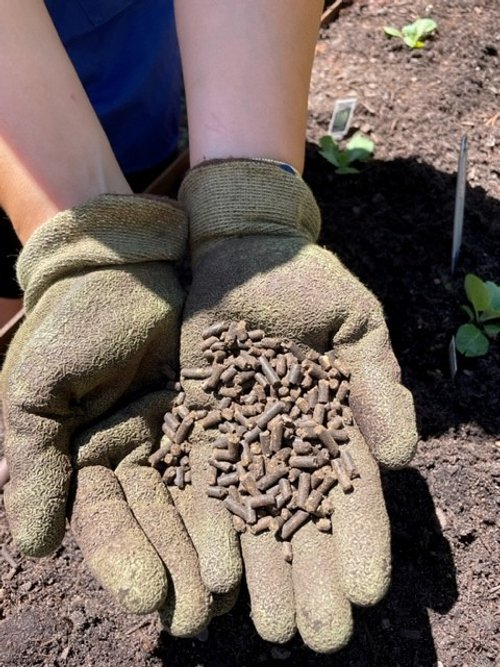Are you feeding your garden?
It’s officially Spring (despite the cool temperatures) and hopefully your garden is filled with lots of warm weather plants, like tomatoes, peppers and cucumbers. Now your garden is planted, you will want to feed those plants. Fertilizer is like fuel for your garden. Plants feed off of the nutrients in the soil and by doing so they remove nutrients from the soil. Thus, we need to add nutrients back into the soil through compost and fertilizing.
What Do I Look for in a Fertilizer?
First and foremost, the Garden Girls recommends an organic fertilizer. We are here to love on Mother Nature. Natural fertilizers do a wonderful job stimulating plant growth and aiding production.
Fertilizers contain three major components- Nitrogen (N), Phosphorus (P) and Potassium (K) or NPK. When you look at a fertilizer label, you will see three numbers- for example, 6-2-4. The 6 will be the Nitrogen, the 2 will be Phosphorus and 4 will be the Potassium. These three numbers can help you decide whether the fertilizer is what your plants need.
Nitrogen is essential for plant growth. Nitrogen helps give plants their growth and green color. If your plants are exhibiting yellow leaves, it could be a lack of nitrogen. A good source of nitrogen is cottonseed meal or fish emulsion.
Phosphorus is used by plants for root growth, flowering and fruit production. When our fruiting plants are starting to produce flowers (think tomatoes, cucumbers, melons), it is a good time to add a fertilizer higher in phosphorus like Microlife Maximum Blooms 3-8-3. Fertilizer with greater amounts of phosphorus can also help blooming flowers.
Potassium is for strong plant stems and helps fight disease. Fertilizers higher in potassium can be applied to seedlings or young plants to aid healthy growth.
How Often Do I Fertilize?
You will want to fertilize when you initially plant your garden. The Garden Girls work in a multipurpose granular fertilizer like Microlife 6-2-4 into the soil before planting.
After the initial feeding of your young plant babies, a general rule of thumb is to fertilize every 2 to 3 weeks. In winter, cool season plants are typically less hungry and you can fertilize monthly. In spring and summer, the plants tend to be heavy eaters (like peppers, tomatoes and cucumbers), so you may want to fertilize every other week after the plant is established.
Anytime your plants look sad or lacking growth and you know they are getting enough sun and water; the next course of action would be to add fertilizer to your garden. A quick layer of compost or application of fish emulsion can do wonders.
Don’t stress if you forgot to fertilize at the initial planting or miss a week of fertilizing. The most important thing to us is that you go outside and enjoy your garden.
Still Need a Garden Sanctuary?
We would love to help you or a friend set-up a garden. We have a few spots remaining for turn-key garden installs this Spring. Start the process by booking a consult here. Already have a garden, tag us on Instagram and show us the growth this Spring.

